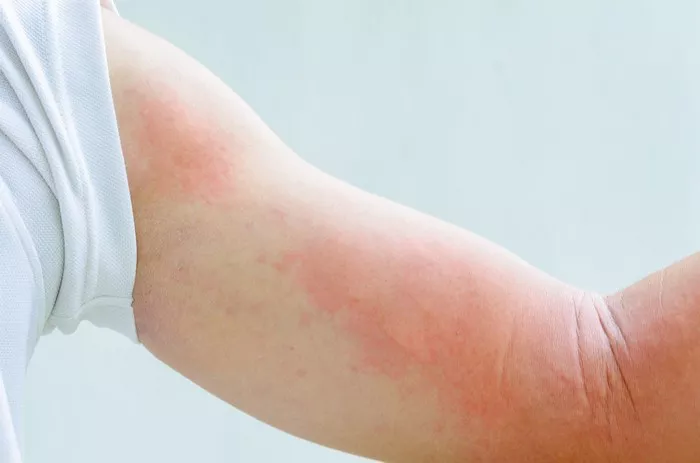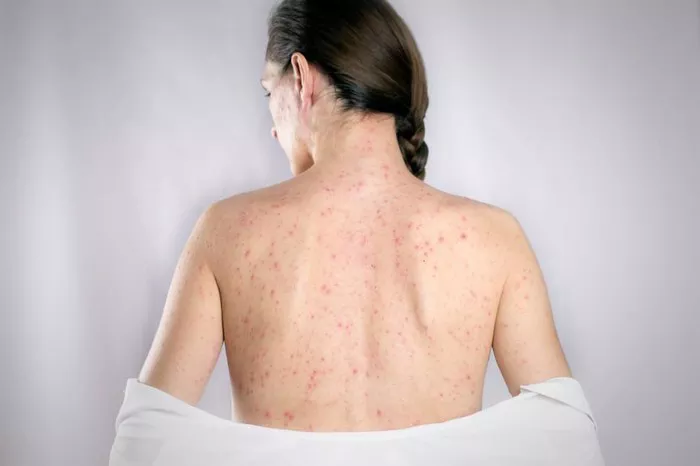Experiencing hives after a workout can be perplexing and distressing. For many, exercise is a crucial part of a healthy lifestyle, but the appearance of itchy, red welts on the skin can discourage even the most dedicated fitness enthusiasts. This article delves into the reasons behind post-exercise hives, exploring the underlying causes, potential triggers, and strategies for prevention and management.
Understanding Hives
Hives, also known as urticaria, are raised, red, itchy welts that can appear on the skin. These welts can vary in size and may join together to form larger areas of swelling. Hives can be acute, lasting less than six weeks, or chronic, persisting for more than six weeks. They can occur anywhere on the body and can be triggered by a variety of factors, including allergens, stress, medications, and physical stimuli.
The Role of Physical Exertion
When it comes to exercise-induced hives, physical exertion is a key component. The body undergoes several physiological changes during exercise, including increased heart rate, elevated body temperature, and the release of various chemicals. These changes can sometimes trigger the immune system to react, resulting in hives.
Common Triggers of Exercise-Induced Hives
Several factors can contribute to the development of hives after a workout. Understanding these triggers can help in managing and preventing outbreaks.
1. Increased Body Temperature
One of the most common triggers of exercise-induced hives is an increase in body temperature. As you exercise, your body heats up, and in some individuals, this can cause the release of histamine—a chemical involved in allergic reactions. The release of histamine can lead to the development of hives.
2. Sweating
Sweating is a natural response to physical exertion and elevated body temperature. However, sweat can sometimes act as an irritant, especially if it mixes with certain chemicals on the skin, such as lotions or perfumes. This irritation can trigger hives in susceptible individuals.
3. Pressure and Friction
The pressure and friction from clothing or equipment during exercise can also contribute to the development of hives. Tight clothing, straps, or repetitive motions can irritate the skin, leading to a condition known as pressure urticaria or frictional urticaria.
4. Cholinergic Urticaria
Cholinergic urticaria is a specific type of hives triggered by an increase in body temperature, such as that caused by exercise, hot showers, or emotional stress. Individuals with cholinergic urticaria develop small, itchy hives when their body temperature rises. This condition is more common in young adults and can be exacerbated by hot or humid conditions.
The Immune Response and Histamine Release
The immune system plays a central role in the development of hives. When the body perceives a threat—whether it’s an allergen, infection, or physical stimulus—it releases histamine and other chemicals from mast cells in the skin. Histamine causes the blood vessels to dilate and become more permeable, leading to the characteristic redness, swelling, and itching of hives.
Identifying the Underlying Causes
Identifying the specific cause of exercise-induced hives can be challenging, as multiple factors may be involved. Here are some steps to help pinpoint the triggers:
1. Keep a Workout Diary
Maintain a detailed record of your workouts, noting the type of exercise, duration, intensity, environmental conditions, clothing, and any skin products used. Also, document the timing and severity of hives outbreaks. This diary can help identify patterns and potential triggers.
2. Evaluate Your Environment
Consider the environment in which you exercise. Factors such as temperature, humidity, and air quality can impact your skin’s reaction. Exercising in a hot, humid environment can increase the likelihood of hives, especially if you have cholinergic urticaria.
3. Review Your Skincare Routine
Examine your skincare products and routines. Certain lotions, sunscreens, or perfumes can interact with sweat and irritate the skin, leading to hives. Opt for hypoallergenic products and avoid applying them immediately before a workout.
4. Consult a Healthcare Professional
If hives persist or worsen, consult a healthcare professional, such as an allergist or dermatologist. They can conduct tests, such as a skin prick test or blood test, to identify specific allergens or underlying conditions contributing to the hives.
Prevention and Management Strategies
Managing exercise-induced hives involves a combination of preventive measures and treatment options. Here are some strategies to consider:
SEE ALSO: What Causes Hives Under Arms?
1. Gradual Warm-Up and Cool-Down
Incorporate a gradual warm-up and cool-down routine into your workouts. This helps your body adjust to temperature changes more slowly, reducing the likelihood of triggering hives.
2. Stay Cool and Hydrated
Keep your body temperature in check by exercising in a cool environment, wearing lightweight, breathable clothing, and staying hydrated. Drinking water before, during, and after exercise can help regulate your body temperature and prevent overheating.
3. Modify Your Exercise Routine
Adjust your exercise routine to minimize triggers. If you’re prone to hives, opt for low-impact activities such as swimming, walking, or yoga, which may be less likely to raise your body temperature excessively.
4. Medications and Supplements
Over-the-counter antihistamines can help prevent or reduce the severity of hives. Non-drowsy antihistamines, such as loratadine (Claritin) or cetirizine (Zyrtec), can be taken before exercise to block the effects of histamine. In more severe cases, a healthcare professional may prescribe stronger medications or recommend supplements such as vitamin C or quercetin, which have antihistamine properties.
5. Avoid Triggers
Identify and avoid known triggers, such as certain foods, medications, or environmental factors, before exercising. For example, if you’re aware that consuming specific foods leads to hives, avoid eating them prior to your workout.
When to Seek Medical Attention
While exercise-induced hives are typically not life-threatening, it’s important to seek medical attention if you experience severe symptoms or signs of anaphylaxis, such as difficulty breathing, swelling of the face or throat, rapid heartbeat, or dizziness. Anaphylaxis is a medical emergency that requires immediate treatment with an epinephrine auto-injector (EpiPen) and emergency medical care.
Conclusion
Hives after working out can be an uncomfortable and frustrating experience, but understanding the underlying causes and triggers can help you manage and prevent outbreaks. By keeping a detailed record of your workouts, evaluating your environment, and consulting a healthcare professional, you can identify the factors contributing to your hives and develop an effective management plan. With the right strategies in place, you can continue to enjoy the benefits of exercise without the discomfort of hives.
Related Topics:


























